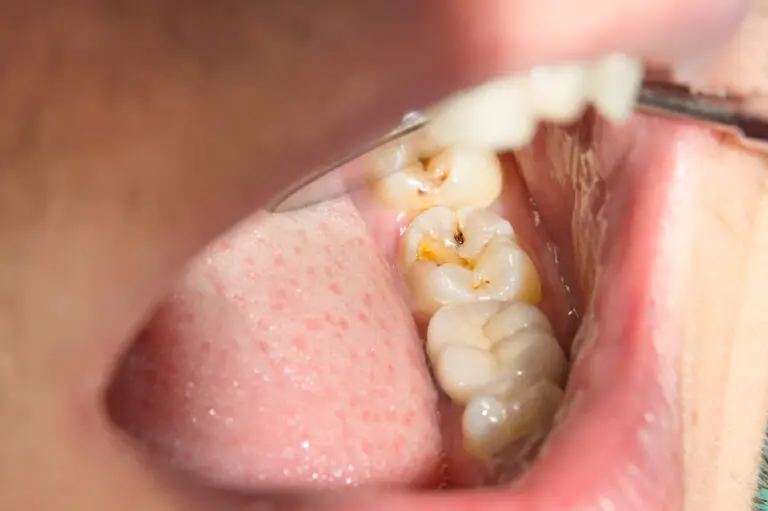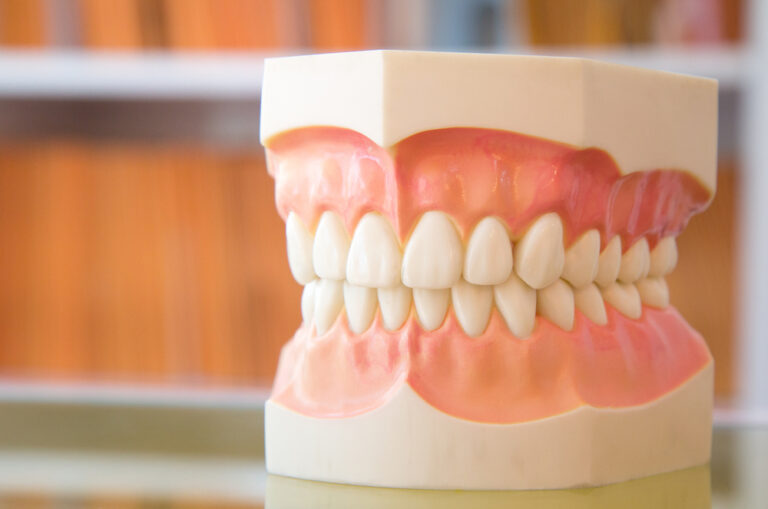When it comes to flossing, you may wonder if touching your gums is a good or bad thing. Some people avoid touching their gums with floss, while others believe it’s necessary for proper oral hygiene. So, should you touch your gums when flossing? The answer is yes, but with caution.
Flossing is an essential part of your daily oral hygiene routine. It helps remove food particles and plaque from between your teeth and along the gum line. However, if you avoid touching your gums while flossing, you may not be getting the full benefits of this practice. Proper flossing technique involves gently gliding the floss up and down each tooth, including the area where the tooth meets the gum line. This helps remove plaque and bacteria that can cause gum disease and tooth decay.
While touching your gums with floss is important, it’s essential to do so gently and without causing any harm. Aggressive flossing can lead to bleeding gums, which can be a sign of gum disease. If you experience bleeding gums while flossing, it’s important to speak with your dentist to determine the cause and develop a plan to improve your oral hygiene routine.
Understanding Flossing and Gum Health
Importance of Flossing
Flossing is an essential part of maintaining good oral hygiene. It helps to remove food particles and plaque from between your teeth and along the gum line, where your toothbrush cannot reach. If left unremoved, these particles can lead to the growth of harmful bacteria that can cause gum disease and tooth decay.
Flossing also helps to stimulate blood flow to your gums, which can keep them healthy and prevent them from becoming inflamed or infected. Regular flossing can also help to prevent bad breath and keep your teeth looking clean and bright.
Role of Gums in Oral Health
Your gums play a critical role in your oral health. They help to hold your teeth in place and protect the roots from damage. Healthy gums are firm, pink, and do not bleed when you brush or floss. However, if they become inflamed or infected, they can start to recede, which can lead to tooth loss and other serious dental problems.
Gum disease is a common problem that affects many people, especially those who do not floss regularly. It is caused by the buildup of plaque and bacteria along the gum line, which can lead to inflammation, bleeding, and eventually, tooth loss. If left untreated, gum disease can also increase your risk of developing other health problems, such as heart disease and diabetes.
In summary, flossing is an essential part of maintaining good oral hygiene and preventing gum disease. By removing food particles and plaque from between your teeth and along the gum line, you can keep your gums healthy and prevent them from becoming inflamed or infected. Regular flossing can also help to prevent bad breath and keep your teeth looking clean and bright.
Should You Touch Your Gums When Flossing?

Flossing is an essential part of maintaining good oral hygiene. It helps remove food particles and plaque from between your teeth and gums, preventing the buildup of harmful bacteria. However, it’s essential to floss correctly to avoid causing damage to your gums. One question that often comes up is whether or not you should touch your gums when flossing.
Proper Flossing Technique
When flossing, it’s crucial to use the correct technique to avoid damaging your gums. Here are some tips to help you floss properly:
- Use a piece of floss that is around 18 inches long. Wrap the ends around your middle fingers, leaving around 1-2 inches of floss to work with.
- Gently insert the floss between your teeth, using a back-and-forth motion to work it into place.
- Curve the floss around the base of each tooth, making sure to go beneath the gum line.
- Use an up-and-down motion to remove the plaque and food particles from your teeth.
- Don’t snap the floss into your gums, as this can cause damage.
Potential Risks of Incorrect Flossing
Flossing incorrectly can cause damage to your gums, leading to bleeding, pain, and even gum disease. Here are some of the potential risks of incorrect flossing:
- Gum damage: If you’re too rough when flossing, you can damage your gums, causing them to bleed or become inflamed.
- Gum recession: Flossing too aggressively can cause your gums to recede, exposing the sensitive roots of your teeth.
- Infection: If you floss too hard, you can push bacteria into your gums, causing an infection.
Overall, it’s essential to floss regularly to maintain good oral hygiene. However, it’s crucial to use the correct technique to avoid causing damage to your gums. Remember to be gentle when flossing and avoid snapping the floss into your gums. If you’re unsure about how to floss correctly, speak to your dentist or dental hygienist for guidance.
Effects of Flossing on Gums
When it comes to flossing, you may wonder whether it is good or bad to touch your gums. While flossing is an essential part of maintaining oral hygiene, it can have both positive and negative effects on your gums. Here’s what you need to know:
Positive Effects
Flossing can help remove plaque and food particles from between your teeth and along your gum line. This can prevent gum disease, which is caused by the buildup of plaque and can lead to gum inflammation, bleeding, and even tooth loss.
Flossing can also help stimulate blood flow to your gums, which can promote healthy gum tissue. By removing plaque and food particles, you can reduce the risk of gum recession, which is when the gum tissue pulls away from the teeth.
Negative Effects
If you floss too aggressively or use a sawing motion, you can damage your gums. This can lead to gum recession, which can cause tooth sensitivity and even tooth loss. It can also lead to gum inflammation and bleeding.
Another potential negative effect of flossing is if you use the same piece of floss for multiple teeth. This can spread bacteria around your mouth and lead to infection or inflammation of the gums.
To avoid the negative effects of flossing, make sure to floss gently and use a new section of floss for each tooth. If you experience any pain or bleeding while flossing, talk to your dentist about the best flossing technique for your teeth and gums.
Overall, flossing can have both positive and negative effects on your gums. By flossing gently and regularly, you can maintain healthy gums and prevent gum disease.
Preventing Gum Damage When Flossing

When it comes to flossing, it’s important to make sure you’re doing it correctly to avoid causing damage to your gums. Here are some tips to help you prevent gum damage when flossing.
Choosing the Right Floss
Choosing the right type of floss can make a big difference in preventing gum damage. Look for floss that is thin and gentle, such as waxed floss or floss made from nylon. Avoid floss that is too thick or rough, as it can irritate your gums and cause bleeding.
You may also want to consider using floss picks or interdental brushes, which can be easier to maneuver and less likely to cause damage to your gums.
Gentle Flossing Practices
When flossing, it’s important to be gentle and avoid using too much pressure. Here are some tips to help you floss gently:
- Use a gentle back-and-forth motion to guide the floss between your teeth.
- Curve the floss around the base of each tooth, making sure to go beneath the gumline.
- Use a clean section of floss for each tooth to avoid spreading bacteria.
If you experience bleeding or discomfort while flossing, don’t be discouraged. Bleeding gums can be a sign of gum disease, but with regular flossing and proper dental care, you can improve the health of your gums and prevent further damage.
Remember, flossing is an important part of your oral hygiene routine, but it’s important to do it correctly to avoid causing damage to your gums. By choosing the right type of floss and practicing gentle flossing techniques, you can keep your teeth and gums healthy and strong.
Consulting a Dental Professional
If you have concerns about your flossing technique or gum health, it is always a good idea to consult a dental professional. They can provide personalized advice and guidance on how to properly care for your teeth and gums.
When to See a Dentist
It is recommended that you see a dentist for a regular check-up and cleaning at least twice a year. However, if you are experiencing any pain, bleeding, or swelling in your gums, it is important to schedule an appointment as soon as possible. These can be signs of gum disease, which left untreated, can lead to more serious oral health issues.
During your appointment, your dentist can evaluate the health of your gums and provide recommendations for improving your flossing technique, if necessary. They may also recommend additional treatments, such as a deep cleaning or gum surgery, to address any underlying issues.
Benefits of Regular Check-Ups
Regular dental check-ups are an important part of maintaining good oral health. During these appointments, your dentist can detect and treat any oral health issues, such as gum disease or cavities, before they become more serious problems.
In addition to addressing any existing issues, regular check-ups can also help prevent future problems. Your dentist can provide personalized advice on how to properly care for your teeth and gums, including tips on flossing and other oral hygiene practices.
Overall, consulting a dental professional can help ensure that you are properly caring for your teeth and gums and can help prevent more serious oral health issues down the line.
Frequently Asked Questions
How far into gums should floss go?
When flossing, you should gently slide the floss between your teeth and slightly below your gumline. However, you should not force the floss too deep into your gums as this can cause damage and bleeding. The goal is to remove any food particles and plaque that may be stuck between your teeth and gums.
Are you supposed to hit your gums when you floss?
No, you should not hit or push the floss into your gums. Instead, you should gently slide the floss up and down between your teeth and slightly below your gumline. This will help remove any food particles and plaque that may be stuck between your teeth and gums.
Is it possible to floss too deep?
Yes, it is possible to floss too deep and cause damage to your gums. When flossing, you should only go slightly below your gumline and never force the floss too deep. If you experience bleeding or discomfort, you may be flossing too deep and should adjust your technique.
How to floss your teeth with pictures
To floss your teeth, start by breaking off around 18 inches of dental floss. Wind the floss around your middle fingers, leaving around 2 inches of floss for your teeth. Hold the floss tight with your thumbs and index fingers. Put the dental floss between two teeth. Begin a sliding motion that rubs the floss along both sides of your teeth. Repeat this action as you move from tooth to tooth, using a clean section of floss for each tooth.
How to floss
To floss properly, start by breaking off around 18 inches of dental floss. Wind the floss around your middle fingers, leaving around 2 inches of floss for your teeth. Hold the floss tight with your thumbs and index fingers. Put the dental floss between two teeth. Begin a sliding motion that rubs the floss along both sides of your teeth. Repeat this action as you move from tooth to tooth, using a clean section of floss for each tooth.
How do you know if you’re flossing correctly?
If you’re flossing correctly, you should feel a slight resistance as you slide the floss between your teeth. You should also see any food particles or plaque that may have been removed from between your teeth and gums. If you experience bleeding or discomfort, you may need to adjust your technique or consult with your dentist.







